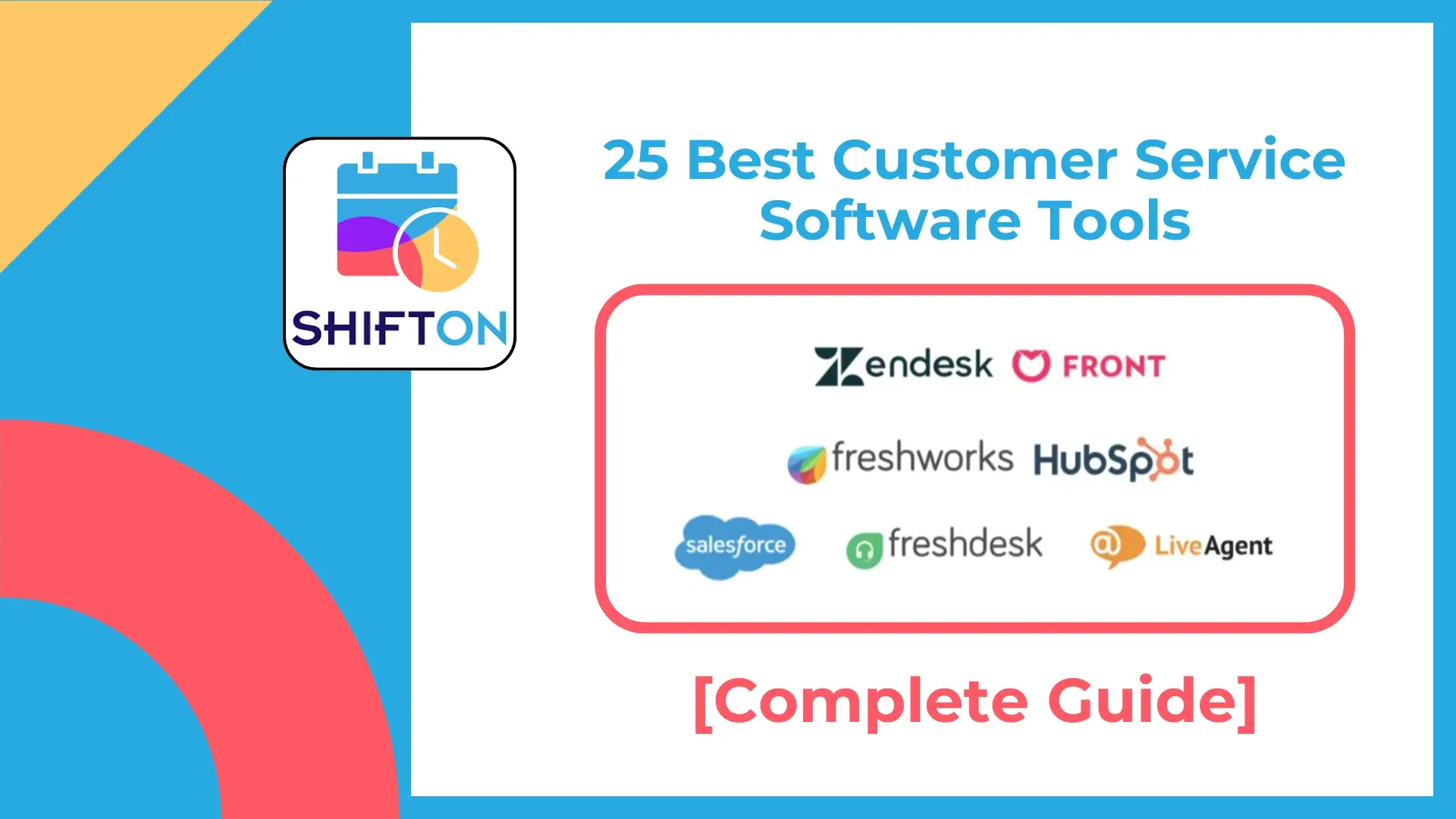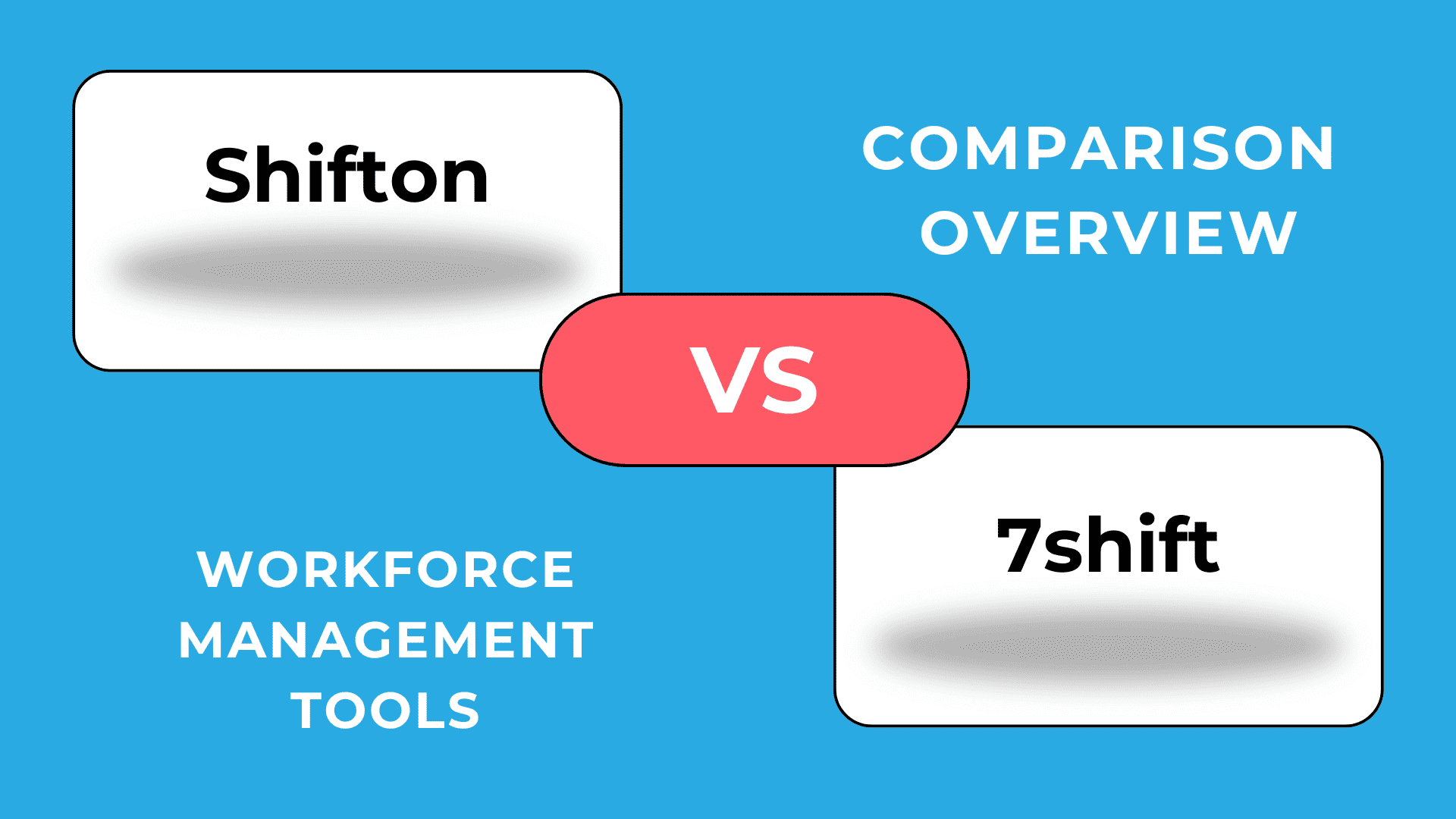Providing exceptional customer service is crucial for business success. Whether you’re running a small business or a large company, having the right customer service software can greatly enhance response times, customer satisfaction, and team efficiency.
With a range of customer support tools available, businesses can select solutions tailored to their needs — live chat platforms, ticketing systems, knowledge bases, social media support, and automation tools. The best choice depends on your support strategy, team size, and integration requirements.
This guide looks at the 25 best customer service software tools that help businesses provide efficient, scalable, and high-quality customer support.
What Is Customer Service Software?
Customer service software is a digital solution that assists businesses in managing, tracking, and improving customer interactions across various communication channels. It streamlines support workflows, allowing teams to respond to inquiries, solve issues, and maintain long-term customer relationships efficiently.
Core Functions of Customer Service Software:
- Centralised support management – Organises customer queries across multiple channels.
- Automated workflows – Cuts response times with AI and automation.
- Collaboration tools – Enable agents to work together efficiently.
- Analytics and reporting – Tracks customer interactions and agent performance.
- Integration with CRM & other tools – Connects support with sales, marketing, and operations.
The best customer support software ensures seamless communication, quicker resolutions, and improved customer satisfaction.
The Different Types of Customer Service Software
Businesses use various types of customer service solutions based on their needs. Here are the most common categories:
Help Desk Software
Handles customer inquiries using ticketing systems that allow support teams to track and resolve issues effectively. Examples include Zendesk, Freshdesk, and HappyFox.
Live Chat & Chatbot Software
Offers real-time customer support via live chat or AI-powered chatbots. Examples include LiveAgent, Intercom, and Olark.
CRM-Based Support Software
Combines customer relationship management (CRM) tools with support features to track interactions and provide personalised service. Examples include HubSpot, Salesforce Service Cloud, and Zoho Desk.
Social Media Support Tools
Allows businesses to monitor and respond to customer queries on social media platforms. Examples include Sprout Social and Chatwoot.
Self-Service & Knowledge Base Software
Enables businesses to create online knowledge bases, FAQs, and community forums for customers to find answers on their own. Examples include HelpDocs and Bettermode.
Using the right mix of customer service tools helps businesses deliver efficient, omnichannel support while reducing operational costs.
Comparison Chart of the Top Customer Service Software Solutions
Choosing the right customer service software depends on various factors such as features, pricing, integrations, and support capabilities. Below is a comparison table highlighting the top customer service tools based on their key features and suitability for different business needs.
| Software | Type of Customer Service | Key Features | Integrations | Pricing |
| Shifton | Shift Scheduling | Automated scheduling, shift swaps, employee tracking | UseDesk, Zapier, Intercom, QuickBooks | Starts at $1. per employee/month |
| LiveAgent | Live Chat, Help Desk | Multi-channel support, ticketing system, real-time chat | CRM, eCommerce, social media | Starts at $15/month |
| Freshdesk | Help Desk, Ticketing | AI-powered automation, multi-channel support | Slack, Microsoft Teams, CRM | Free & paid plans |
| ConnectWise Control | Remote Support | Secure remote access, session recording | Zendesk, Salesforce | Starts at $24/month |
| Service Hub | Customer Relationship Management | Knowledge base, automation, customer feedback | HubSpot ecosystem | Free & paid plans |
| Intercom | Customer Messaging Platform | AI chatbots, customer segmentation | Shopify, Mailchimp | Starts at $74/month |
| Zendesk | Enterprise Customer Support | Advanced analytics, AI automation, omnichannel support | 1,000+ integrations | Starts at $49/month |
| Jira Service Management | Internal Help Desk | IT support, change management, asset tracking | Atlassian suite | Starts at $20/agent |
| Front | Email Management | Shared inbox, workflow automation, analytics | Gmail, Slack, Asana | Starts at $19/month |
| Aircall | Call Centre Software | VoIP, call routing, call analytics | Salesforce, HubSpot | Starts at $30/month |
| HelpDocs | Knowledge Base | SEO-friendly, AI search, multilingual support | Zapier, Slack | Starts at $39/month |
| Gorgias | eCommerce Customer Support | Shopify integration, automated responses | BigCommerce, Magento | Starts at $10/month |
| Olark | Live Chat | Real-time chat, automated responses, CRM sync | HubSpot, Salesforce | Starts at $29/month |
| Sprout Social | Social Media Support | Social listening, analytics, chat support | Instagram, Facebook | Starts at $89/month |
| Chatbot | AI Chatbot Software | Conversational AI, automated responses | Website, CRM | Custom pricing |
| HubSpot | CRM-Based Support | Customer relationship tracking, ticketing system | HubSpot ecosystem | Free & paid plans |
| Bettermode | Customer Self-Service | Community forum, knowledge base, FAQ automation | API, CRM | Custom pricing |
| Hiver | Small Business Help Desk | Gmail integration, email ticketing | Google Workspace | Starts at $15/month |
| HappyFox | Help Desk Management | SLA tracking, omnichannel support | Salesforce, Slack | Starts at $29/month |
| SupportBee | Customer Service Portal | Shared inbox, email collaboration | Trello, Slack | Starts at $13/month |
| SimpleTexting | SMS Customer Support | Bulk messaging, two-way texting | Zapier, Shopify | Starts at $29/month |
| Chatwoot | Open-Source Support Software | Live chat, multi-channel inbox | Custom integrations | Free & paid plans |
| Zoho Desk | AI-Powered Support | Agent workflow automation, analytics | Zoho ecosystem | Starts at $14/month |
| Help Scout | Customer Service Platform | Shared inbox, live chat, analytics | Slack, Shopify | Starts at $20/month |
| Salesforce Service Cloud | CRM & Support | AI-driven automation, omnichannel support | Salesforce products | Starts at $25/month |
| Tidio | Small Business Customer Support | AI chatbot, live chat, email support | Shopify, Facebook Messenger | Free & paid plans |
This comparison provides insights into key features, pricing models, and integrations, helping businesses choose the best customer service software for their needs.
Top 25 Customer Service Tools & Their Review
1. Shifton – Best Shift Schedule Software
Shifton is a powerful workforce scheduling tool designed to help businesses automate shift planning and workforce management. It is ideal for companies that need to efficiently schedule employees across multiple locations.
Key Features:
- Automated shift scheduling and time tracking
- Employee self-service options for shift swaps and availability updates
- Mobile accessibility for real-time updates and notifications
- Compliance tracking for labour law adherence
Best for: Companies with rotating shifts, call centres, retail businesses, and remote teams that need flexible scheduling solutions.
Pricing: Custom pricing based on business size and needs.
2. LiveAgent – Best for Live Chat
LiveAgent provides real-time chat and ticketing solutions that help businesses manage customer interactions across multiple platforms.
Key Features:
- Omnichannel support, including live chat, email, and social media
- Ticketing automation for faster issue resolution
- CRM integration for customer history tracking
- Customisable chat widgets for websites
Best for: Small and medium-sized businesses looking for a cost-effective live chat and ticketing system.
Pricing: Starts at $15 per agent/month.
3. Freshdesk – Best for Support Teams
Freshdesk offers AI-powered automation and multi-channel support for customer service teams.
Key Features:
- AI-driven chatbots and automation
- SLA management for efficient response tracking
- Multi-channel support including chat, email, and phone
- Self-service portal with knowledge base tools
Best for: Businesses needing a scalable, user-friendly customer support solution.
Pricing: Free plan available, paid plans start at $15 per agent/month.
4. Connect Wise Control – Best for Remote Support
ConnectWise Control is a remote desktop and IT support software that allows businesses to provide assistance to customers remotely.
Key Features:
- Secure remote access for troubleshooting
- Session recording for quality control
- Integration with Zendesk, Salesforce, and ticketing platforms
- Custom branding for a personalised customer experience
Best for: IT service providers, tech support teams, and remote troubleshooting.
Pricing: Starts at $24 per month.
5. Service Hub – Best for CRM-Based Customer Support
Service Hub, a customer service solution from HubSpot, helps businesses integrate CRM-based support tools to streamline interactions with customers and improve service quality.
Key Features:
- Ticketing automation for better case management
- Customer feedback surveys to track satisfaction levels
- Self-service knowledge base for quick issue resolution
- Integration with the HubSpot CRM ecosystem
Best for: Businesses using HubSpot for sales and marketing who need a seamless customer service integration.
Pricing: Free plan available; paid plans start at $45 per month.
6. Intercom – Best for Customer Service Teams
Intercom is a customer messaging platform that allows businesses to provide personalised, automated customer support through chat and email.
Key Features:
- AI-powered chatbots for automated responses
- Customer segmentation for targeted messaging
- Live chat, email, and in-app messaging support
- Integrations with Shopify, Mailchimp, and Salesforce
Best for: Companies that want to combine automated and human-powered support to enhance customer engagement.
Pricing: Starts at $74 per month.
7. Zendesk – Best for Enterprise Customer Service
Zendesk is a comprehensive customer service platform designed for large-scale enterprises that need advanced customer support tools.
Key Features:
- AI-powered automation for ticket management
- Omnichannel support, including email, chat, and social media
- Advanced reporting and analytics to track customer interactions
- 1,000+ integrations with popular business tools
Best for: Enterprises and large customer service teams needing a scalable, feature-rich support solution.
Pricing: Starts at $49 per agent/month.
8. Jira Service Management – Best for Internal Customer Support
Jira Service Management, part of Atlassian’s suite, is a help desk platform tailored for internal support teams like IT departments and HR teams.
Key Features:
- IT service management (ITSM) capabilities
- Incident and change management tools
- Asset tracking and reporting
- Integration with Atlassian products like Jira and Confluence
Best for: Companies needing an internal help desk solution for IT support and service requests.
Pricing: Starts at $20 per agent/month.
9. Front – Best for Customer Service Email Management
Front is a collaborative email management tool that helps customer service teams organise and respond to customer emails efficiently.
Key Features:
- Shared inbox for team collaboration
- Workflow automation for ticket management
- Email analytics to track response times and resolution rates
- Integrations with Gmail, Slack, and Asana
Best for: Teams handling high email volumes that need a shared inbox solution.
Pricing: Starts at $19 per agent/month.
10. Aircall – Best for Call Centre Customer Support
Aircall is a cloud-based call centre software that helps customer service teams manage phone support more efficiently.
Key Features:
- VoIP phone system with call routing and forwarding
- Call analytics to track agent performance
- CRM and help desk integrations
- Customisable IVR (interactive voice response) menus
Best for: Businesses that provide phone-based customer support.
Pricing: Starts at $30 per user/month.
11. HelpDocs – Best for Customer Service Knowledge Base
HelpDocs is a self-service knowledge base software that allows businesses to create FAQ sections and documentation for customers.
Key Features:
- SEO-friendly knowledge base
- AI-powered search functionality
- Multilingual support for global customers
- Integration with Slack and Zapier
Best for: Companies that want to offer self-service support to reduce support ticket volume.
Pricing: Starts at $39 per month.
12. Gorgias – Best for eCommerce Customer Service
Gorgias is a customer support platform built for eCommerce businesses, helping them manage customer inquiries across multiple channels.
Key Features:
- Deep integration with Shopify, BigCommerce, and Magento
- Automated responses to common inquiries
- Live chat, social media, and email support
- Revenue tracking from customer support interactions
Best for: Ecommerce brands looking to automate and streamline their customer service operations.
Pricing: Starts at $10 per month.
13. Olark – Best for Live Chat Customer Support
Olark provides real-time customer support through live chat, allowing businesses to interact with customers instantly.
Key Features:
- Customisable live chat widgets
- Automated chat responses and triggers
- CRM and eCommerce integrations
- Detailed chat analytics and reporting
Best for: Businesses that rely on instant customer engagement through live chat.
Pricing: Starts at $29 per month.
14. Sprout Social – Best for Social Media Customer Service
Sprout Social is a social media management tool that enables businesses to monitor and respond to customer messages on social platforms.
Key Features:
- Social listening and engagement tracking
- AI-driven customer sentiment analysis
- Multi-platform messaging and response management
- Scheduling and automation for social media posts
Best for: Brands and enterprises managing high volumes of social media customer interactions.
Pricing: Starts at $89 per month.
15. Chatbot – Best for Automated Customer Service Support
Chatbot is an AI-powered tool that provides automated responses to customer inquiries through websites, social media, and chat apps.
Key Features:
- Conversational AI for real-time customer interactions
- Pre-built chat templates for quick deployment
- Integration with website chat, Facebook Messenger, and WhatsApp
- Analytics and reporting on chatbot performance
Best for: Businesses looking to reduce customer waiting times with AI-driven automation.
Pricing: Custom pricing based on usage.
16. HubSpot – Best for CRM-Based Customer Support
HubSpot offers a CRM-integrated customer support solution, helping businesses manage customer queries and strengthen relationships.
Key Features:
- Unified customer support and sales tracking
- Live chat and chatbot automation
- Customizable help desk and ticketing system
- Seamless integration with HubSpot CRM
Best for: Businesses using HubSpot for sales and customer management.
Pricing: Free plan available; paid plans start at $50 per month.
17. Bettermode – Best for Customer Self-Service
Bettermode is a community-driven customer support tool that enables businesses to develop self-service portals and customer forums.
Key Features:
- Customizable community platform for peer-to-peer support
- SEO-optimized knowledge base
- Gamification and rewards for community participation
- Integration with API, CRM, and help desk solutions
Best for: Businesses that want to reduce ticket volume by offering a self-service option.
Pricing: Custom pricing based on business needs.
18. Hiver – Best for Small Business Customer Service
Hiver is a help desk solution built directly into Gmail, allowing businesses to streamlining customer support emails.
Key Features:
- Shared inbox for team collaboration
- Email ticketing and tracking
- Automated workflows to assign and escalate tickets
- Analytics to monitor response times and agent performance
Best for: Small businesses and teams that want to manage customer emails directly from Gmail.
Pricing: Starts at $15 per user/month.
19. HappyFox – Best for Help Desk Management
HappyFox delivers a comprehensive help desk and ticketing system that streamlines customer service operations.
Key Features:
- AI-powered automation for ticket categorization
- Omnichannel support (email, chat, social media, phone)
- Internal knowledge base for agent collaboration
- SLA tracking and reporting
Best for: Businesses needing an all-in-one help desk and customer service platform.
Pricing: Starts at $29 per agent/month.
20. SupportBee – Best for Customer Service Portals
SupportBee is a straightforward customer service tool designed to help teams collaborate on support requests efficiently.
Key Features:
- Shared inbox for managing customer emails
- Internal notes and discussions for better teamwork
- Simple ticketing system without complex automation
- Integration with Trello, Slack, and other business tools
Best for: Small and medium-sized businesses that prefer a lightweight, easy-to-use help desk solution.
Pricing: Starts at $13 per user/month.
21. SimpleTexting – Best for SMS Customer Support
SimpleTexting gives businesses a platform for sending and receiving SMS messages to enhance customer engagement.
Key Features:
- Bulk SMS messaging for promotions and support
- Two-way texting for direct customer communication
- Automated text responses
- Integration with Zapier and eCommerce platforms
Best for: Retailers, service businesses, and appointment-based companies.
Pricing: Starts at $29 per month.
22. Chatwoot – Best Open-Source Customer Service Software
Chatwoot is a self-hosted, open-source customer support tool that enables businesses to tailor their customer service encounter.
Key Features:
- Multi-channel inbox for email, live chat, and social media
- Custom branding and UI customisation
- Chatbots and AI automation
- API for integration with existing business tools
Best for: Businesses that want full control over their customer service software.
Pricing: Free and paid plans available.
23. Zoho Desk – Best for Agent Workflows
Zoho Desk is a feature-rich customer service platform that boosts team cooperation and support automation.
Key Features:
- AI-powered chatbot for automated replies
- Workflow automation for ticket assignments
- Multi-channel support (email, chat, phone, social media)
- Integration with the Zoho ecosystem
Best for: Businesses looking for AI-enhanced customer support workflows.
Pricing: Starts at $14 per agent/month.
24. Help Scout – Best Overall Customer Service Software
Help Scout is a straightforward yet potent customer service platform intended for businesses that need an efficient help desk without complexity.
Key Features:
- Shared inbox for team-based email support
- Live chat and knowledge base integration
- Customisable workflows for ticket automation
- Analytics dashboard to assess support performance
Best for: Companies that need an intuitive and easy-to-use customer service solution.
Pricing: Starts at $20 per user/month.
25. Salesforce Service Cloud – Best for Enterprise Customer Support
Salesforce Service Cloud is an enterprise-grade customer service solution that integrates with the entire Salesforce ecosystem.
Key Features:
- AI-powered automation and chatbots
- Omnichannel customer support management
- Advanced analytics and reporting
- Seamless CRM integration for personalised customer service
Best for: Enterprises that require a high-end, customisable customer support solution.
Pricing: Starts at $25 per agent/month.
Benefits of Customer Service Software
Using customer service software offers numerous benefits that enhance both business efficiency and customer satisfaction.
1. Increased Customer Retention
Fast, effective customer support fosters trust and encourages customers to return. Dependable service software ensures customers receive prompt and helpful responses.
2. Lower Operational Costs
Automation reduces the need for large support teams by managing routine inquiries, ticketing, and chatbot responses, saving businesses money.
3. Enhanced Efficiency and Collaboration
Customer service software helps teams optimise their workflows, reducing response times and removing confusion caused by email overload or scattered communication.
4. Valuable Analytics and Insights
Performance tracking tools measure response times, customer satisfaction, and agent productivity, enabling businesses to refine their support strategies.
5. Increased Productivity
Automation features, ticketing systems, and self-service options allow support teams to concentrate on complex customer needs instead of repetitive tasks.
Types of Customer Service Software
Different businesses require varied customer service solutions to handle inquiries efficiently. Here are the main types of customer service software that companies utilise to improve their support operations.
Real-Time Assistance
Real-time assistance tools permit businesses to provide instant customer support via live chat, voice calls, or chatbots. These tools improve response times and customer engagement by addressing issues as they arise.
Key Features:
- Live chat functionality for immediate responses.
- AI-powered chatbots for automated replies.
- Co-browsing and screen sharing for technical support.
Best for: Businesses that need instant communication channels for real-time customer interactions.
Help Desk Platforms
Help desk platforms organise customer inquiries into tickets, making it easier for support teams to track, prioritise, and resolve issues efficiently.
Key Features:
- Ticket management system for tracking inquiries.
- Workflow automation for ticket assignments.
- Collaboration tools for multi-agent support.
Best for: Companies managing large volumes of customer queries that require an efficient ticketing system.
Knowledge Base Software
A knowledge base enables customers to find answers on their own, easing the load on support teams. This software offers a self-service portal with FAQs, tutorials, and troubleshooting guides.
Key Features:
- Searchable FAQ section for quick info retrieval.
- Multilingual support for global customer bases.
- Content analytics to track popular help topics.
Best for: Businesses looking to reduce support tickets by equipping customers with self-service resources.
Social Media Management Tools
Social media sites have become crucial for customer support. Social media management tools help businesses track mentions, reply to customer messages, and analyze engagement metrics.
Key Features:
- Unified inbox for managing messages across multiple social platforms.
- Automated sentiment analysis to understand customer emotions.
- Post scheduling and performance tracking.
Best for: Businesses with a robust social media presence that require real-time monitoring and engagement tools.
Choosing the Right Customer Service Software for Business
Choosing the correct customer service software depends on the size of your business, the industry, and the needs of your customers. Here are crucial factors to consider:
- Business Goals – Determine if you need a help desk, live chat, CRM, or multi-channel support tool.
- Integration Capabilities – Ensure the software integrates with CRM, email, and project management tools.
- Scalability – Select software that can grow with your business.
- Automation & AI Features – Look for chatbots, ticket automation, and self-service options to make support more efficient.
- Pricing & ROI – Assess if the features justify the cost for your business model.
Integrating Customer Service Software with Other Tools
For optimum efficiency, customer service software should integrate seamlessly with:
- CRM Systems (e.g., Salesforce, HubSpot) – Sync customer data for personalised service.
- Project Management Tools (e.g., Asana, Trello) – Assign tasks and track progress.
- Live Chat & Chatbots (e.g., Intercom, Chatbot) – Automate and enhance customer interactions.
- Social Media Platforms (e.g., Sprout Social, Chatwoot) – Manage customer engagement across social channels.
The Future of Customer Service Software
Customer service software is rapidly evolving with new trends shaping the industry.
Key Trends to Watch:
- AI-powered automation – Chatbots and voice assistants are enhancing self-service experiences.
- Predictive Analytics – AI-driven insights will foresee customer needs before they arise.
- Omnichannel Support – Businesses will unify email, chat, phone, and social media interactions into a seamless experience.
- Increased Personalisation – Machine learning will enable hyper-personalised support.
- Remote Support & Virtual Assistants – Businesses will keep investing in remote customer service teams.
Final Thoughts – Short Summary
The right customer service software can profoundly influence customer satisfaction, retention, and team efficiency. Here are six key takeaways:
- Choose the right tool based on your business size and support strategy.
- Invest in automation to reduce response times and boost efficiency.
- Ensure integration with CRM, social media, and other tools.
- Utilize self-service options like knowledge bases and chatbots to reduce support tickets.
- Track key metrics to enhance customer service performance.
- Stay ahead of trends by adopting AI and predictive analytics for smarter customer interactions.
UPD Article March 3, 2025









































